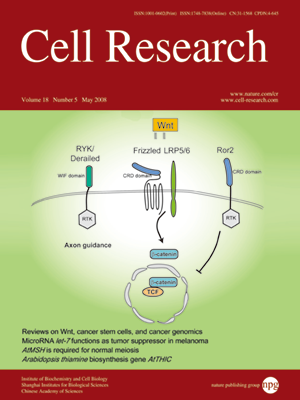
Volume 18, No 5, May 2008
ISSN: 1001-0602
EISSN: 1748-7838 2018
impact factor 17.848*
(Clarivate Analytics, 2019)
Volume 18 Issue 5, May 2008: 523-527
REVIEWS
Wnt signaling and stem cell control
Roel Nusse
Howard Hughes Medical Institute, Department of Developmental Biology, Stanford University School of Medicine, Stanford, CA 94305, USA
Correspondence: Roel Nusse(rnusse@stanford.edu )
Wnt signaling has been implicated in the control over various types of stem cells and may act as a niche factor to maintain stem cells in a self-renewing state. As currently understood, Wnt proteins bind to receptors of the Frizzled and LRP families on the cell surface. Through several cytoplasmic relay components, the signal is transduced to β-catenin, which then enters the nucleus and forms a complex with TCF to activate transcription of Wnt target genes. Wnts can also signal through tyrosine kinase receptors, in particular the ROR and RYK receptors, leading to alternative modes of Wnt signaling. During the growth of tissues, these ligands and receptors are dynamically expressed, often transcriptionally controlled by Wnt signals themselves, to ensure the right balance between proliferation and differentiation. Isolated Wnt proteins are active on a variety of stem cells, including neural, mammary and embryonic stem cells. In general, Wnt proteins act to maintain the undifferentiated state of stem cells, while other growth factors instruct the cells to proliferate. These other factors include FGF and EGF, signaling through tyrosine kinase pathways.
Cell Research (2008) 18:523-527. doi: 10.1038/cr.2008.47; published online 8 April 2008
FULL TEXT | PDF
Browse 2111


